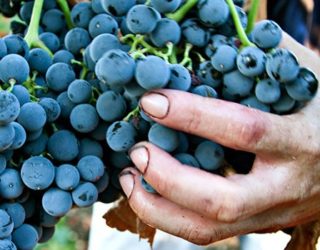Thanks to a project by the Regional Ministry of Agriculture for classification, conservation, propagation and marketing.
Filled up all the casks and received plenty of national and international awards, Sicilian wine industry is now experiencing a new phase of relentless rise. Looking back to its past, it is now restoring its most ancient parents to new life, promoting them throughout the world. An in-depth analysis of the huge wine heritage, from its endangered ancient origins to its still unexploited potential qualities. The project aiming at enhancing and exploiting Sicilian indigenous vine varieties was signed by the Regional Ministry of Agriculture and is run by Mr Dario Cartabellotta. It involves 470 wineries, 84 towns and 8 provinces of the island with the help of the Development Offices of Agrigento, Catania, Caltanissetta, Messina, Palermo, Ragusa-Siracusa, Trapani. Thanks to their contribution, 2622 regional vine varieties, 863 local vine varieties and 88 ancient vine varieties have been analysed, for a total amount of 3573 plants selected.
The relationship between men and vines in Sicily has always been fascinating. It has a long history which started ten thousand years ago. Here is a brief overview.
Grapestones charred by Vitis vinifera and dating back to the 8th millennium BC were found inside a cave (Grotta dell’Uzzo), in the Natural Reserve “Dello Zingaro”, in the province of Trapani. Even the 9th Canto of the Odyssey tells about the sound vines of M. Aetna which did not need to be taken care of by men, or rather, by Cyclops… The qualities of Sicily’s vines were then exalted by Roman authors such as Cato the Elder, Maro, Virgilius, Plinius, Columella. Even at that time, our varieties were exported to the rest of Italy and throughout the Mediterranean area for new grafts. However, the first scientific classification of Sicilian vine species was carried out in the 17th century, by Francesco Cupani who examined and described 49 varieties. Over the 19th century, studies became more detailed and extensive: Baron Antonio Mendola di Favara, one of the most highly regarded ampeplographist (study of leaves) and the first hybridizer of his time, classified up to 3000 species. He was the first to classify the red Malvasia Rovasenda, the white Catarratto Caruso, the Muscat Pulliat, the Muscat Catarratto Cerletti. Unfortunately, all his manuscripts were lost before his death. The spread of a vine pest, known as phylloxera, gave a big boost to new systematic studies on viticulture. In 1863, the Ministry instituted the Provincial Commissions of Ampeplograpy, charged with the task of classifying all the species in each province. All the efforts, however, were expended to curb the fearful plague which threatened the regional heritage. Therefore, after long debates and rigorous tests, the decision was made to provide vines with antibodies, i.e. to make use of American grape-producing vines as rootstocks.
It has been a drastic and complex genetic reconstruction that inevitably reduced the number of the varieties, which are still so many. Nevertheless, their qualities have been significantly improved, and this remains the main objective of Sicilian producers. The project of the Agriculture Ministry is based on the analysis of the remarkable genetic variation of ancient Sicilian vines. It is thanks to them that we utilize the word “vitignopopolazione” (population of vine varieties), a term used to signal the presence of several biotypes in some varieties. And here are the objectives: to enhance the indigenous vines for their viticultural oenological and commercial reutilisation; to study and assess the agronomic, oenological and qualitative response; to clone the indigenous vines, harvest the clones in a collection field of about 20 hectares and to list them among the authorised species; to provide the nurserymen with the material for the propagation through nuclei of pre-propagation. Besides the scheduled actions, sanitary controls will be carried out, mainly serologic and molecular tests and wood biological sampling. Therefore, within a few years, Sicily will be able to tell and show the whole history of its vines and wines which were enjoyed the Mediterranean peoples and that still charms people from all over the world. Such a history goes hand in hand with the history of the whole island, its rural and anthropological heritage, its archaeological treasures, the paths of the peoples who inhabited it, and the ingenuity of those researchers, experts and producers who made it so rich and famous for its wines. After the “Strade del vino”(Paths of wine), set up throughout the Island, a tourist and cultural route through the vineyards and the wineries of four provinces, a new project is coming to life: “le Rotte del vino” (Routes of wine). It is a tour of those small islands (like Pantelleria and the Aeolian Islands) that produced and still produce the “wines of the gods”. Nectars of sun scented with wind and indigenous cultivations, able to conquer and enchant travellers and tourists from all over the world. I hope wine will increasingly be a synonym of tourism and culture: an unbreakable link, a magic marriage between Earth’s History and man’s history.
By Claudia Mirto
“Ulisse” Agosto 2004






Comments are closed.